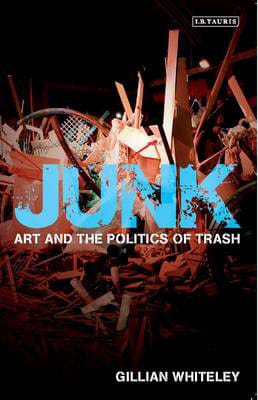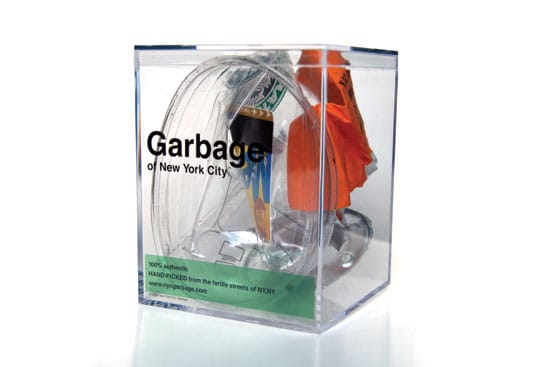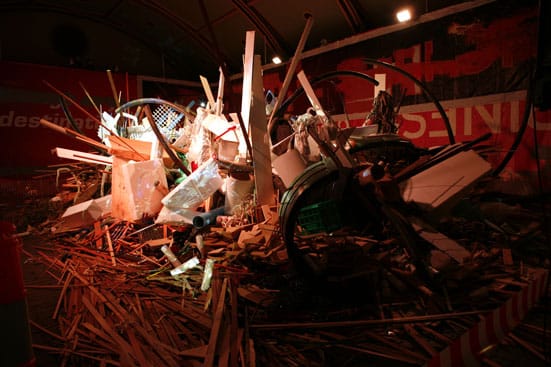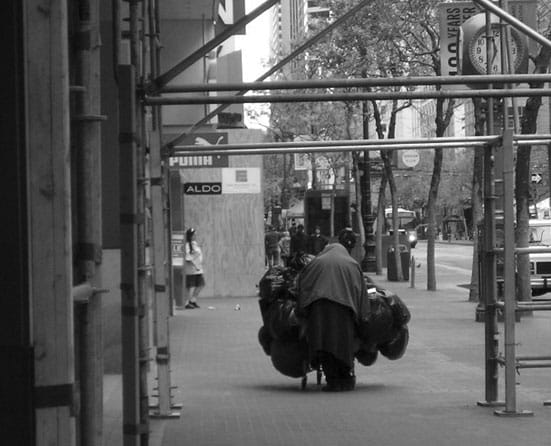A tiny area of South London received a colossal avalanche of snow in the summer of 2000. I get off the tube at Brixton and walk to a fire station nearby where crowds are slowly gathering underneath the station's tower. It is baking hot and I need a drink. The first downfall occurs, white covers the entire area with 'snow' falling in all nooks and crannies but creating a wonderful white frost over the cars parked and almost everything in the local vicinity. Further 'snowfalls' engulf the below. The crowds throw snowballs at each other and frantic mothers try to get the stuff out of their children's hair. The last fall occurs and then we are left in wonderment of being both surrounded by white snow and still remaining baking hot in the unrelenting Summer heat. The snow I am referring to is in fact shredded paper which has become the key ingredient in this public intervention by artist Tomoko Takahashi, an artist whose devotion to 'rescuing' all things junk and discarded, to readdressing matter designated for life's scrapheap, has won her numerous critical acclaim predominantly in the early 2000s.
In 'Junk', Dr. Gillian Whiteley takes the reader on a journey through a range of artists/ activists/writers/thinkers and the like who embrace junk forms as a matter for re-consideration in our times of social, political and economical unease. The journey begins with highlighting her grandfather as 'bricoleur' and the 'make do and mend' society of Northern England in which she grew up. Subsequent chapters highlight a whole range of approaches to how trash materials have provoked discussion and at times outraged many in their positioning within the canons of art discourse. It is a journey full of facts and intriguing insights to those devoted to using such material in order to begin deconstructing their usage as a symptom of our times. Gillian creates a textual fabric of historical references, contemporary theory alongside autobiographical accounts and in places moments of self-reflexivity. Particularly poignant is her recollection of her walks through the streets of Paris. In a time when one product is near enough obsolete the moment it is put on the consumer market, superseded by another more shiny, time-saving or downright more gimmicky newer other, we are a society caught in the never-ending tumult of conspicuous consumption whose values for the newer better other have created a gargantuan scrapheap of culturally-valueless unwanteds. I shudder to think the amount of unwanted televisions that will be dumped at skips across the land when we 'go digital'.
The same summer as London's paper avalanche, Tomoko and I showed in an exhibition called 'Beautiful' at the OXO Tower Wharf. Following the relatively easy hang of my paintings on a wall, I spent time watching Tomoko carefully construct her installation using various 'rubbished' matter, seeing the artist playfully engage with the materials in the space whilst adopting a no nonsense attitude towards selecting and categorising these 'has beens' in a process of complete hardcore taxonomy. The window installation she created was as sculptural and 'painterly' as anything else in this 'art' show. I had witnessed the artist work both within the formal conventions in the presenting of her matter as 'art' and to create a sublime experience for both the passive window 'flâneur' in the 'Beautiful' show and also as instigator to the active participant ready to revel in the sculptural beauty to be found in shredded office paper in her Brixton performance. Thus, there positively remains those who wish to subvert common concerns for newness and place the trashy or rather the trashed as a leading constituent in the opposition of our consumer-obsessed society.
What Gillian achieves in Junk is to jam-pack the reader with fascinating historical and contemporary viewpoints which successfully presents the case for 'junk' as having a clear historical lineage whose trace is timely, well justified and culturally-valuable as an enquiry.
Lee Campbell

Junk Book Cover

New York City Garbage.
Publicity image from website
(reproduced with kind permission provided
by Justin Gignac, founder of New York City Garbage)
www.nycgarbage.com

Ash Keating, 2020? (Part 1) Thursday 22nd May 2008,
mixed resource installation project
Arts House Meat Market, North Melbourne, 2008.
Photograph: Noble Imaging.
Courtesy of the artist and BREENSPACE, Sydney.

A homeless person pushing bundled possessions
through the streets of San Francisco, April 2006.
Photograph by Gillian Whiteley